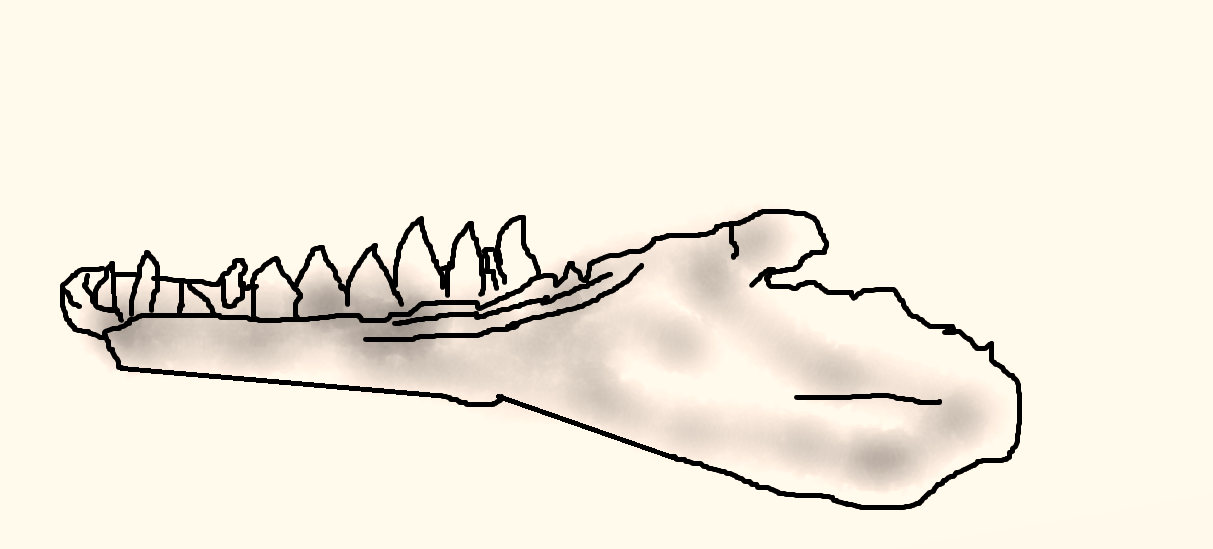Tangaroasaurus on:
[Wikipedia]
[Google]
[Amazon]
''Tangaroasaurus'' is an extinct  Fossils known from the same geological formation, the All Day Bay formation and Gee Greensand Formation, include an unnamed species of Squalodelphinidae and a species of '' Prosqualodon''.
Fossils known from the same geological formation, the All Day Bay formation and Gee Greensand Formation, include an unnamed species of Squalodelphinidae and a species of '' Prosqualodon''.
genus
Genus ( plural genera ) is a taxonomic rank used in the biological classification of living and fossil organisms as well as viruses. In the hierarchy of biological classification, genus comes above species and below family. In binomial nom ...
of squalodontid whale from the Miocene
The Miocene ( ) is the first epoch (geology), geological epoch of the Neogene Period and extends from about (Ma). The Miocene was named by Scottish geologist Charles Lyell; the name comes from the Greek words (', "less") and (', "new") and mea ...
of New Zealand
New Zealand ( mi, Aotearoa ) is an island country in the southwestern Pacific Ocean. It consists of two main landmasses—the North Island () and the South Island ()—and over 700 smaller islands. It is the sixth-largest island count ...
. It contains a single species, ''Tangaroasaurus kakanuiensis''. Similar to ''Basilosaurus
''Basilosaurus'' (meaning "king lizard") is a genus of large, predatory, prehistoric archaeocete whale from the late Eocene, approximately 41.3 to 33.9 million years ago (mya). First described in 1834, it was the first archaeocete and prehistor ...
'' and its close relative ''Squalodon
''Squalodon'' is an extinct genus of whales of the Oligocene and Miocene epochs, belonging to the family Squalodontidae. Named by Jean-Pierre Sylvestre de Grateloup in 1840, it was originally believed to be an iguanodontid dinosaur but has sinc ...
'', it was originally thought to be a species of marine reptile. Parts of the Holotype are presumably lost. Its name comes from Tangaroa
Tangaroa (Takaroa in the South Island) is the great of the sea, lakes, rivers, and creatures that live within them, especially fish, in Māori mythology. As Tangaroa-whakamau-tai he exercises control over the tides. He is sometimes depicted a ...
, the Maori god of the sea, while the suffix ''-saurus'' comes from the Latin word for reptile, the group that Tangaroasaurus was originally placed in.
The type fossil
A fossil (from Classical Latin , ) is any preserved remains, impression, or trace of any once-living thing from a past geological age. Examples include bones, shells, exoskeletons, stone imprints of animals or microbes, objects preserved ...
was found in a grey clay
Clay is a type of fine-grained natural soil material containing clay minerals (hydrous aluminium phyllosilicates, e.g. kaolin, Al2 Si2 O5( OH)4).
Clays develop plasticity when wet, due to a molecular film of water surrounding the clay par ...
deposit at All Day Bay and consists of a jaw bearing a few teeth, measuring each. The original describer of the type specimen, William Blaxland Benham, described it as a reptile, either a dinosaur such as Megalosaurus or an late surviving ichthyosaur. The genus was described as an odontocete cetacean in 1979 by R. E. Fordyce.
The status of the genus as a cetacean remains under discussion.
 Fossils known from the same geological formation, the All Day Bay formation and Gee Greensand Formation, include an unnamed species of Squalodelphinidae and a species of '' Prosqualodon''.
Fossils known from the same geological formation, the All Day Bay formation and Gee Greensand Formation, include an unnamed species of Squalodelphinidae and a species of '' Prosqualodon''.
See also
*Squalodon
''Squalodon'' is an extinct genus of whales of the Oligocene and Miocene epochs, belonging to the family Squalodontidae. Named by Jean-Pierre Sylvestre de Grateloup in 1840, it was originally believed to be an iguanodontid dinosaur but has sinc ...
*Evolution of cetaceans
The evolution of cetaceans is thought to have begun in the Indian subcontinent from even-toed ungulates 50 million years ago (mya) and to have proceeded over a period of at least 15 million years. Cetaceans are fully aquatic marine mammals bel ...
*Basilosaurus
''Basilosaurus'' (meaning "king lizard") is a genus of large, predatory, prehistoric archaeocete whale from the late Eocene, approximately 41.3 to 33.9 million years ago (mya). First described in 1834, it was the first archaeocete and prehistor ...
References
{{Taxonbar, from=Q21334046 Prehistoric cetacean genera Miocene mammals of Oceania Prehistoric monotypic mammal genera Fossil cetaceans misidentified as reptiles Fossils of New Zealand Fossil taxa described in 1935